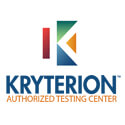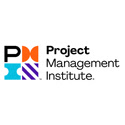VMware Certified Professional 6 – Data Center Virtualization
About This Course
The VMware Certified Professional 6 certification program is one of the highly accredited certification that deals with virtualization technologies. VMware vSphere is one of the leading virtualization technologies in use today around the world by a huge number of businesses. The VMware Certified Professional 6 – Data Center Virtualization or VCP6-DCV certification program is aimed at IT system admins involved in deployment and maintenance of VMware vSphere and related products such as VMware Converter, VDP, vCenter, ESXi, etc. in the VMware environment.
The VMware Certified Professional 6 – Data Center Virtualization certification improves your professional credibility thus, training you to deliver optimum business value to your company. VCP6-DCV is an industry-accredited certification that validates your proficiency to manage and troubleshoot vSphere in V6 infrastructure by using industry best practices to offer reliable and scalable virtualization platform for the organization. VMware Certified Professional 6 – Data Center Virtualization is the most sought after certification from the VMware certifications’ family with 100,000+ professionals certified already.
Who Should Attend This Course
Anyone who aspires to be VMware certified.
Why This Course
VMware Certified Professional 6 – Data Center Virtualization certification improves your professional credibility. VCP6-DCV is an industry-accredited certification that validates your proficiency to manage and troubleshoot vSphere in V6 infrastructure by using industry best practices to offer reliable and scalable virtualization platform for the organization. VMware Certified Professional 6 – Data Center Virtualization is the most sought after certification from the VMware certifications’ family with 100,000+ professionals certified already.
Course Objectives
- Configuring and administering vSphere Security
- Configuring and administering advance level vSphere Networking and Storage
- Upgrading vSphere Deployment to 6
- Managing vSphere 6 Resources
- Recovering vSphere Deployments
- Troubleshooting vSphere Deployment
- Deploying Data Center for vSphere
- Configuring and administering vSphere Availability
- Managing vSphere Virtual Machines
Course Prerequisites
VMware recommends having a minimum of 6 months of experience working with vSphere before taking up the VMware Certified Professional 6 – Data Center Virtualization course.
Course Benefits
The course validates your expertise in building scalable and robust virtual infrastructures by leveraging vSphere 6 including configuration, optimization and installation. Further, the VCP6-DCV certification helps you demonstrate your skills to consolidate, administer and deploy:
- Virtualization technologies including vSphere DRS (Distributed Resource Scheduler) and HA (High Availability) clusters.
- Storage virtualization leveraging VMware VMFS (Virtual Machine File System), Storage I/O and Storage DRS Control.
- Network virtualization leveraging vSphere’s distributed and standard switches
- Network I/O Control
- vSphere management utilizing vRealize Operations and vCenter Server.
- Virtual machines






























